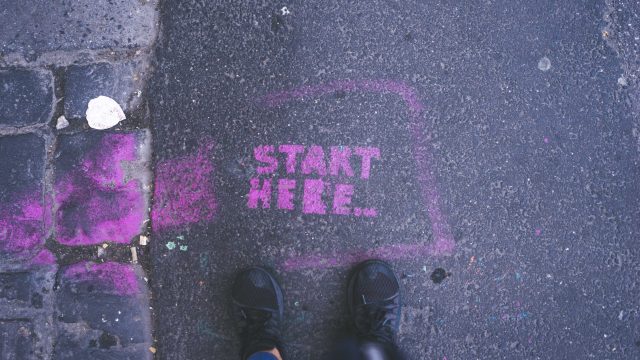Online arbitrageurs are very used to taking a product’s price at face value, and will often compare the sticker price at one retailer to the sticker price at Amazon. This can be a big mistake, as many retailers run discounts throughout the year on certain products that you can use to source products more profitably.

Using retailer discounts to get hold of cheap inventory is a brilliant way of sourcing products at a better price, and in this article we’re going to show you everything you need to know about how to do this.
When do retailers run deals and product discounts?
There’s a common misconception that retailers only run discounts during key seasonal events, such as Prime Day, Black Friday and January sales. This isn’t the case, and many retailers such as Target and Walmart run discounts throughout the year on various different categories of product.
Retailers will often have sales on end-of-line products, or even products that are not discontinued but they’ve just chosen not to stock any more. Retailers may also offer seasonal sales such as back to school sales and end of season sales to clear stock out before summer and before winter. Retailers may also run overstock or liquidation sales, because they have over-ordered by mistake and need to run a sale to clear out excess inventory.
However, some of the most common discounts and offers run by big retailers are for their loyalty members – and if you aren’t signed up to at least four or five of the big retailers’ loyalty programs when doing online arbitrage you should definitely do so, as it can give you the ability to make big savings when procuring stock.
Why using retailer discounts is key for Amazon arbitrage
Retailer discounts can be great for you as an online arbitrageur, as there are many people who do OA who will simply look at the sticker price and determine that a particular item is not profitable – when in fact, there may be a multitude of discounts you can add on which would make the item profitable to sell on Amazon.
For example, Target has a page which they call Top Deals (it can be found quite easily on Google) where you can find the offers that Target is running at any given time. Just some of the discounts we found at the time of writing include:
- $5 – $10 gift cards when purchasing certain items
- 30% off certain types of toys with Target Circle
- $20 off certain photography products with Target Circle
- Up to $40 off certain kitchen and dining items
One thing you’ll notice is that for many of these discounts you need to be signed up to Target’s loyalty program. Lots of other retailers have them also – Lowe’s, Sam’s Club, Walmart, etc. They generally don’t cost anything to join and sometimes allow for some quite significant discounts on the sticker price.
What’s more, many retailers have compounding discounts when you buy more than one of something – for example, spend $100 on health and beauty and get $25 off. All this can contribute to some quite significant profit, whereas to the untrained eye, there appeared to be none. And also, if your competitors don’t think like you do, they’re likely to miss these opportunities – meaning far less competition for you as a seller.
Stacking discounts and rewards
Many retailers allow you to stack discounts and coupons to get even more money off. This can lead to some serious profit on discounted items if you know where to look and you buy the right things.
For example, you might go onto Target Circle and find a few different offers in the health and beauty section. You may have a 20% off storewide coupon as well as an offer where if you spend $100 on health and beauty, you get $30 off.
Let’s say you find some hand cream for $20. An uninformed arbitrageur is going to look at this hand cream, research how much it’s selling for on Amazon (also $20) and decide it’s not profitable. However, you, the one who’s clued up on retailer discounts, realises that if you buy 6 of these hand creams, you can actually make a decent profit.
So, you put 6 hand creams in your basket for a total price of $120. Target gives you $30 off because you’ve spent more than $100 on health and beauty – so you’re now on $90 total spend. But, stacking your 20% off storewide coupon gives you a further 20% off the sticker price, meaning your $90 is now $66. Divide this by 6 and you get the cost per item – which is now $11.
So now you’ve got a $20 item for $11. All you now need to do is put it on Amazon at $19 and will probably win the buy box, meaning you’ll stock out fairly quickly (providing you’ve done your research on the product’s sales rank properly) and your margin will be over 40% on each item – all because you knew how to leverage retailer discounts properly.
Also, some retailers do price matching – so if Walmart was selling this item for $18, you could get Target to price match and then stack up your discounts, saving you even more money. You should always check this as it’s always a chance to get a bit more money off.
How can I find profitable products?
Profitable products can be found quite easily – you just need to make sure you’re looking often enough at retailer discount pages. As we’ve mentioned, most big box retailers will have these discount pages where there’s a round-up of all the offers and deals they’re running at any given time. Sign up for each retailer’s loyalty program, as some of the offers are exclusive to loyalty members, whether it’s Target Circle, Sam’s Cash or Walmart Rewards.
Part of this is going to involve manually checking these retailers’ deal pages – often you can sign up to get email updates on the deals they’re running but a manual check of each page on a regular basis will lead you to finding profitable OA leads.
However, this is a very manual process, and something that’s likely to take up a lot of your time. A way to do this more efficiently and quickly is by using a tool like SourceMogul, which will automatically scan hundreds of retailers for millions of products and tell you instantly which products you can sell for a profit on Amazon.
For example, if Target is running a promotion on toys where a particular item is $20 lower than the Amazon price, SourceMogul will pick this up and will show you the potential profit margin on this product. If you have Target coupons and rewards that could further lower this price, SourceMogul allows you to input them so you see your true margin up front.
SourceMogul is available to anyone with an Amazon Professional seller account (which is really easy to sign up for if you haven’t already) and comes with a free 7 day trial for you to see whether it’s right for you. Check it out at the link below.
Conclusion
To conclude, there’s huge profit to be had by properly using retailer discounts, and what’s more it’s something that many people who do OA don’t even consider. Of course, you need to make sure that the products that are discounted are of a good enough sales rank that they’ll sell quickly on Amazon – you don’t want to be sitting on dead inventory that you picked up just because it was a bargain. Also it’s inevitable that there will be times when you look at retailer deals and you won’t be able to find anything suitable – either because it’s too competitive, won’t sell quickly enough or you don’t have the rights to sell it on Amazon (particularly the case with branded items like Lego or Barbie dolls.)
However, using retailer discounts can uncover items that on the face of it, you would never think were profitable, and it’s one of the best ways as an online arbitrageur to grow your business and get ahead of the competition.
Frequently asked questions about using retailer offers for online arbitrage
How do I find the best retailer discounts for online arbitrage?
A lot of this involves a bit of detective work. Make sure you’re signed up to email alerts from all your favourite retailers, and ensure you check out their deals pages at least once every few days to see what kind of discounts they are running. Once you see a product you like, check out how much it’s selling for on Amazon using SourceMogul, and if you think you can make money on it after your discount, buy it and get it sent to an Amazon fulfilment center.
SouceMogul will also take into consideration already discounted products from major retailers. Even better, using SourceMogul alongside any retailer discounts you might be able to get hold of is going to mean you know you’re always getting the best deal and sourcing products for as little as possible.
How do I handle returns or defective products sourced from retailers?
If you’re doing FBA, Amazon will usually just refund the customer and ask you what you want to do with the product. You can elect to have it shipped back to you and you can take it up with the retailer for a refund or an exchange, but this is likely to have cost you money as Amazon won’t send it back to you for free. You also won’t get a refund on your FBA fees.
If you’re doing FBM, you might be able to charge your customer a restocking fee if it’s just a return where, for example, they’ve changed their mind. If it’s defective you’re unlikely to be able to (and it wouldn’t be very fair to try) charge a restocking fee, so then it’s up to you whether you take this up with the retailer to get a refund or an exchange.
How do I scale an arbitrage business using retailer discounts?
Use SourceMogul. Fundamentally, when you get past a certain point of turnover and profit from your online arbitrage business, manually checking retailer discount pages becomes very time consuming, and this is time that is generally better spent elsewhere. SourceMogul will automate much of the product sourcing process for you, and really is a no-brainer when it comes to scaling and growing an online arbitrage business.
More strategy
-

6 steps to becoming an Amazon seller. No experience needed.
Becoming a successful Amazon seller is easy - the Amazon brand and logo represents…
-

Top tips for success from a new Amazon seller
We've compiled a list of the top tips for new sellers, gathered from a…
-

How to get ungated on Amazon – your guide to Amazon restricted categories
If you’re looking to expand your online arbitrage business, you might find yourself tempted…
-

How to prepare for Amazon Q4 trading
Every year the holiday season seems to come around a little earlier. As an…




